Handheld Dynamometers 101: Century-old technology for the modern practitioner
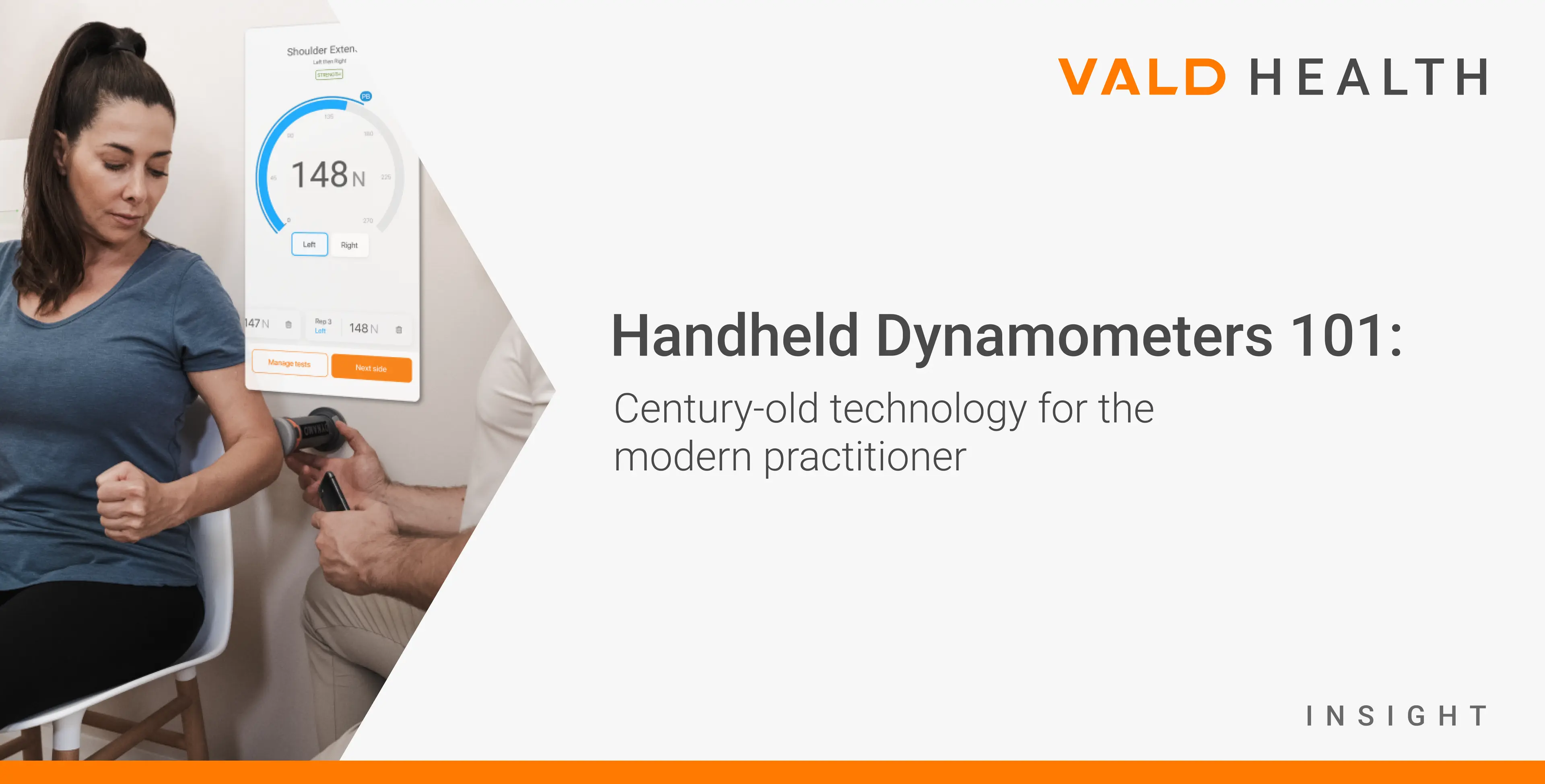
In healthcare and sports, accurately assessing muscle strength is crucial for evaluating physical capacities, formulating a diagnosis and monitoring rehabilitation or training progress. Handheld Dynamometers (HHDs) have been providing precise, objective assessments of force for over 150 years (1856). This article offers insights into the evolution of Handheld Dynamometry and how VALD’s DynaMo technology has revolutionized a centuries-old practice.
Evolution of Handheld Dynamometers
HHDs are an advanced method for assessing muscle strength – offering a portable, objective and more precise alternative to traditional manual muscle testing (MMT) techniques. These devices have significantly evolved over more than a century, branching into various types and styles to suit different needs.
HHDs are an advanced method for assessing muscle strength – offering a portable, objective and more precise alternative to traditional manual muscle testing (MMT) techniques.
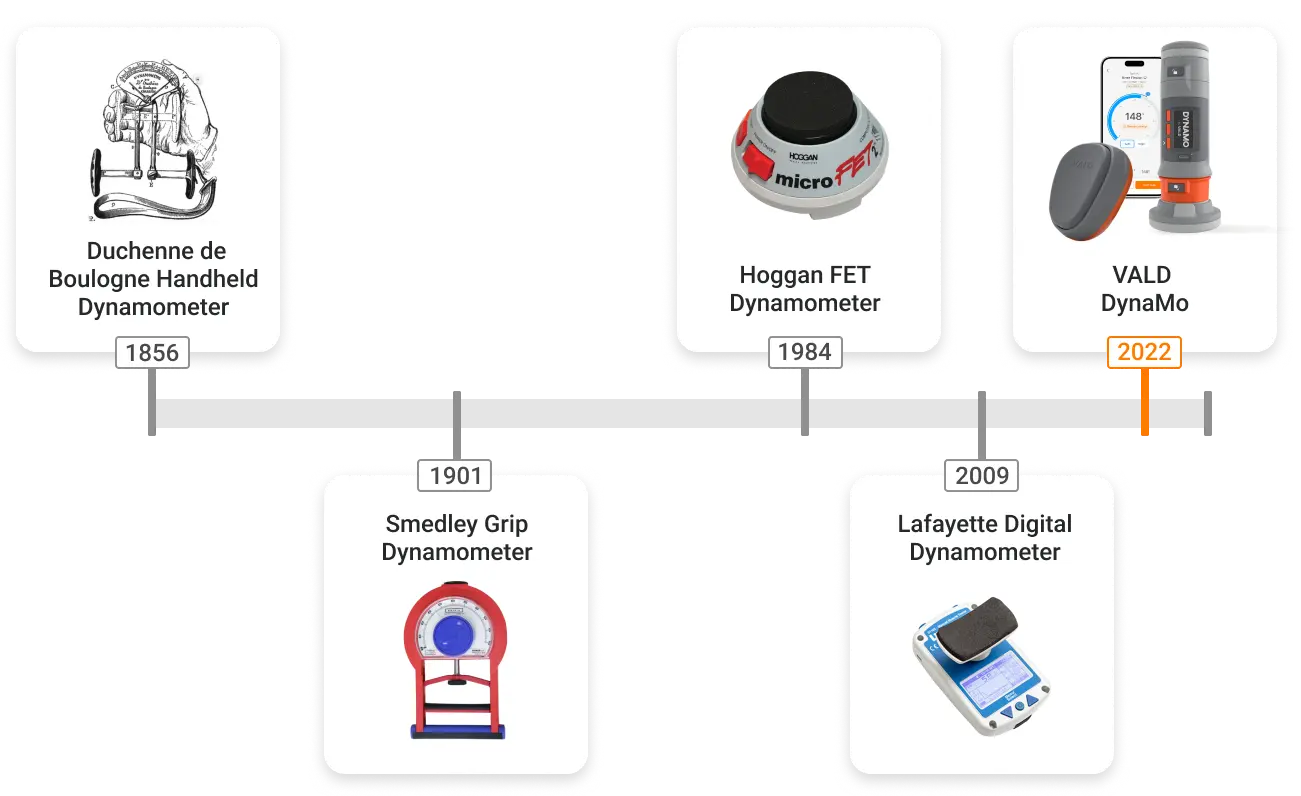
Initially starting as analog tools with basic force measurements, HHDs have transitioned into more sophisticated forms and can primarily be categorized into 3 main types:
- Analog HHD: These dynamometers represent the traditional type, featuring mechanical pressure gauges with a spring mechanism for force measurement. Their design is simple, with force displayed on an analog dial, making them known for ease of use.
- Standalone Digital HHD: These devices represented a technological advancement with real-time digital readouts for more precise measurements. They offer enhanced accuracy, sophisticated data collection and interpretation.
- App-Enabled HHD: Being the most advanced, these dynamometers (e.g., VALD’s DynaMo Handheld Strength & ROM system) combine more accurate measurement hardware with comprehensive software solutions for convenient data collection, in-depth analysis and trend monitoring through software integration.
This technological advancement has cemented HHDs as an indispensable tool across diverse healthcare and sports settings – anywhere there is a need to measure muscle strength. They are used by various health and performance professionals (e.g., sports physicians, physiotherapists, physical therapists, strength and conditioning coaches and exercise physiologists) and can be used in almost any environment – from the sporting field to a clinic – thanks to their size and portability as compared with laboratory-based muscle strength testing (such as an Isokinetic Dynamometer).
How Handheld Dynamometers Work
HHDs operate by measuring the physical force exerted onto their load cell(s). A HHD will typically have a pad or a strap which acts as an interface between the body part being tested and the dynamometer. Forces from the muscle(s) contraction are then converted into measurable data – i.e., the muscle/s’ “strength”. These load cell sensors are a critical component in devices such as VALD’s DynaMo Plus, DynaMo Lite and DynaMo Max.
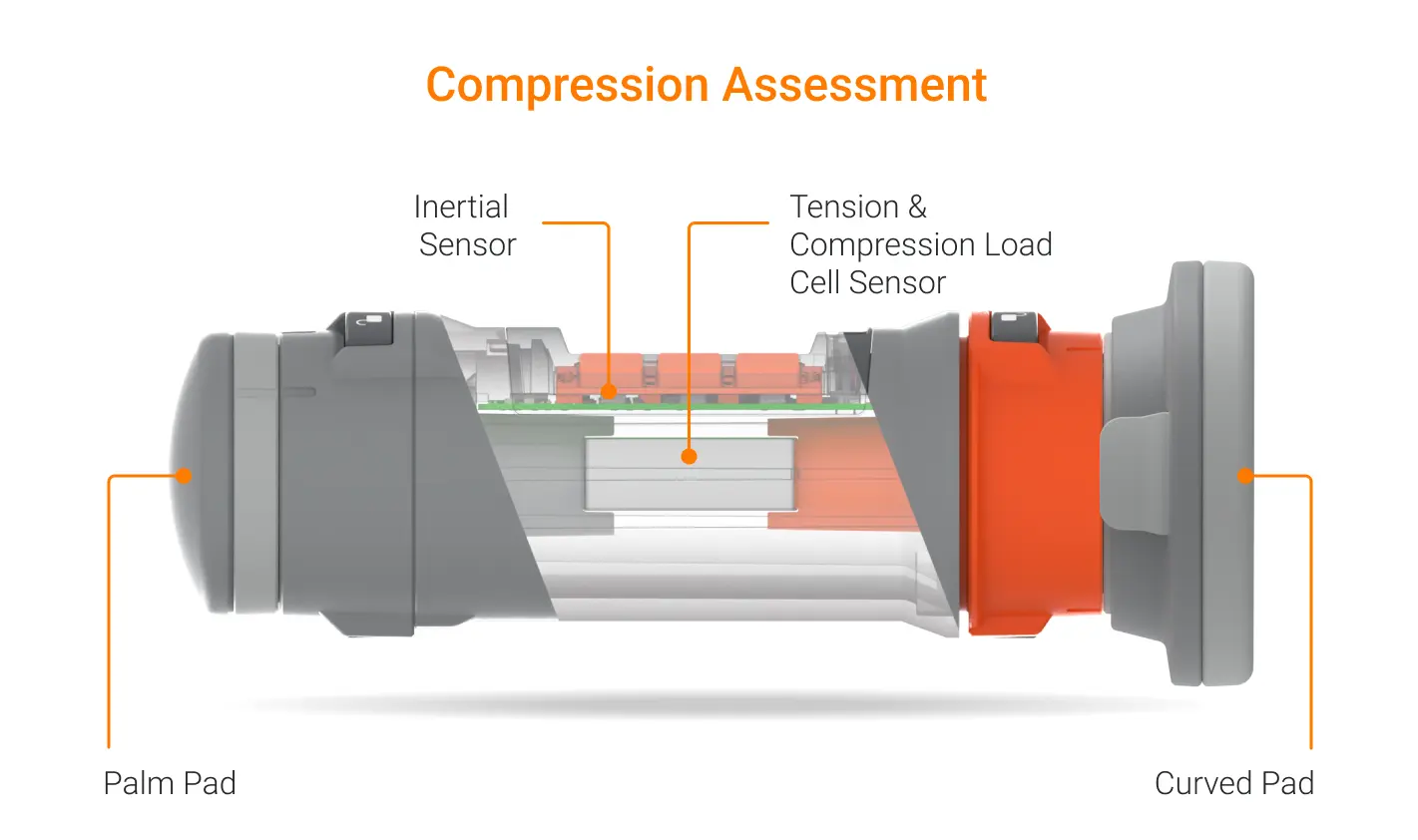
Load cells measure the force applied against them, converting this mechanical force into an electrical signal, accurately representing the force reading.
Advancements in technology have not just made load cells smaller, more capable and more affordable, they have also enabled their integration of similar devices, so a dynamometer and inclinometer that would have previously been two devices can now exist in one.
Advancements in technology have enabled the integration of similar devices, so a dynamometer and inclinometer that would have previously been two devices can now exist in one.
Types of Tests that can be Performed with Handheld Dynamometers
Traditionally, HHDs performed one of three functions:
- Compression strength testing;
- Tension strength testing; or
- Grip strength testing.
Compression dynamometers are most commonly used for traditional handheld testing, while tension dynamometers are more commonly used for fixed-point testing. A grip dynamometer does as the name suggests – it measures grip strength and is commonly a stand-alone device due to the unique shape required to perform these tests.
Historically, it was uncommon for a single HHD to perform more than one of these functions. However, modern devices such as DynaMo have revolutionized this by combining all of these testing capabilities into one device.
In fact, DynaMo Plus essentially combines four devices into one: namely compression, tension, grip and range of motion (ROM) measurement.
Historically, it was uncommon for a single HHD to perform more than one of these functions. However, modern devices such as DynaMo have revolutionized this by combining all of these testing capabilities into one device.
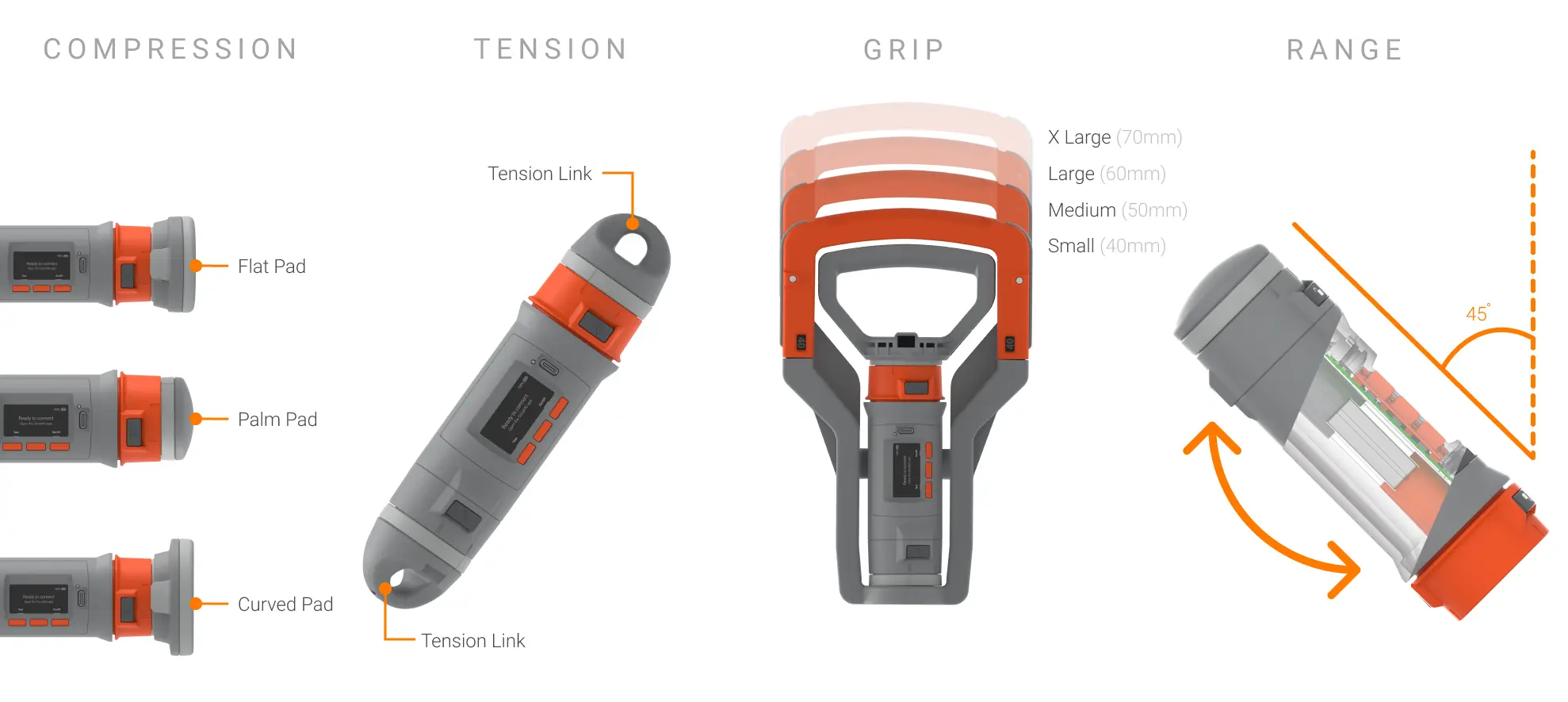
Addressing "the Reliability Problem"
The shift from analog to digital models has markedly enhanced the accuracy, reliability and overall user experience in dynamometers. However, despite these advancements, many HHDs are still faced with limitations when it comes to the reliability of their results, which can be attributed to human error – particularly when performing compressive muscle testing assessments. Specifically, most HHDs require the assessor to apply equal and opposite forces to the testing limb which can cause variable results depending on the strength of both the assessor and the patient.
Learning from the development of ForceFrame (a comprehensive, easy-to-use system for accurately and reliably testing and training isometric strength), VALD designed DynaMo to be the Swiss army knife of strength and ROM testing, enabling both fixed and handheld assessments.
Learning from the development of ForceFrame, VALD designed DynaMo to be the Swiss army knife of strength and ROM testing, enabling both fixed and hand-held assessments.
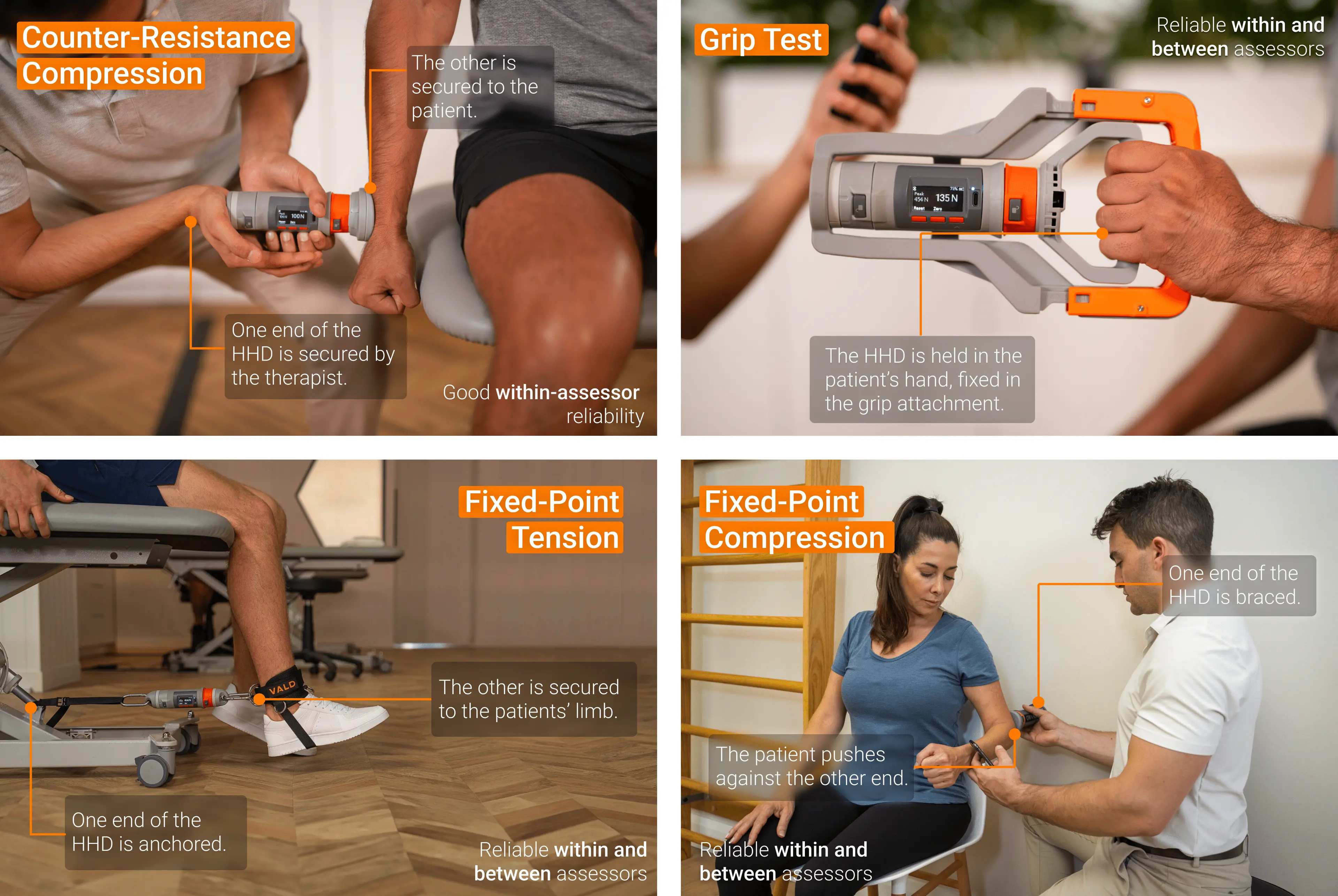
To further ensure accuracy and reliability in testing, consistent and reliable testing protocols and cues are the best steps in mitigating any data variability. For example, the DynaMo app has inbuilt testing protocols (including videos) to help all users facilitate inter- and intra-testing reliability.
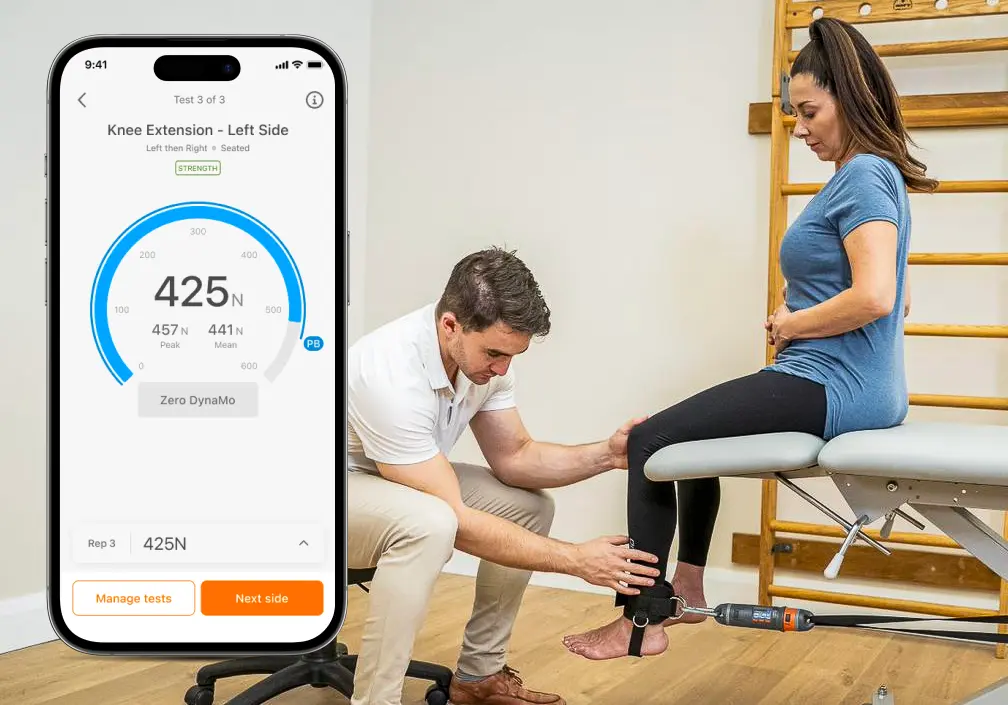
Understanding the Metrics and Results
Understanding the data generated is important for both practitioners and patients. So, let’s look into what all the numbers and graphs from an assessment tell us about muscle strength, balance and rehabilitation progress.
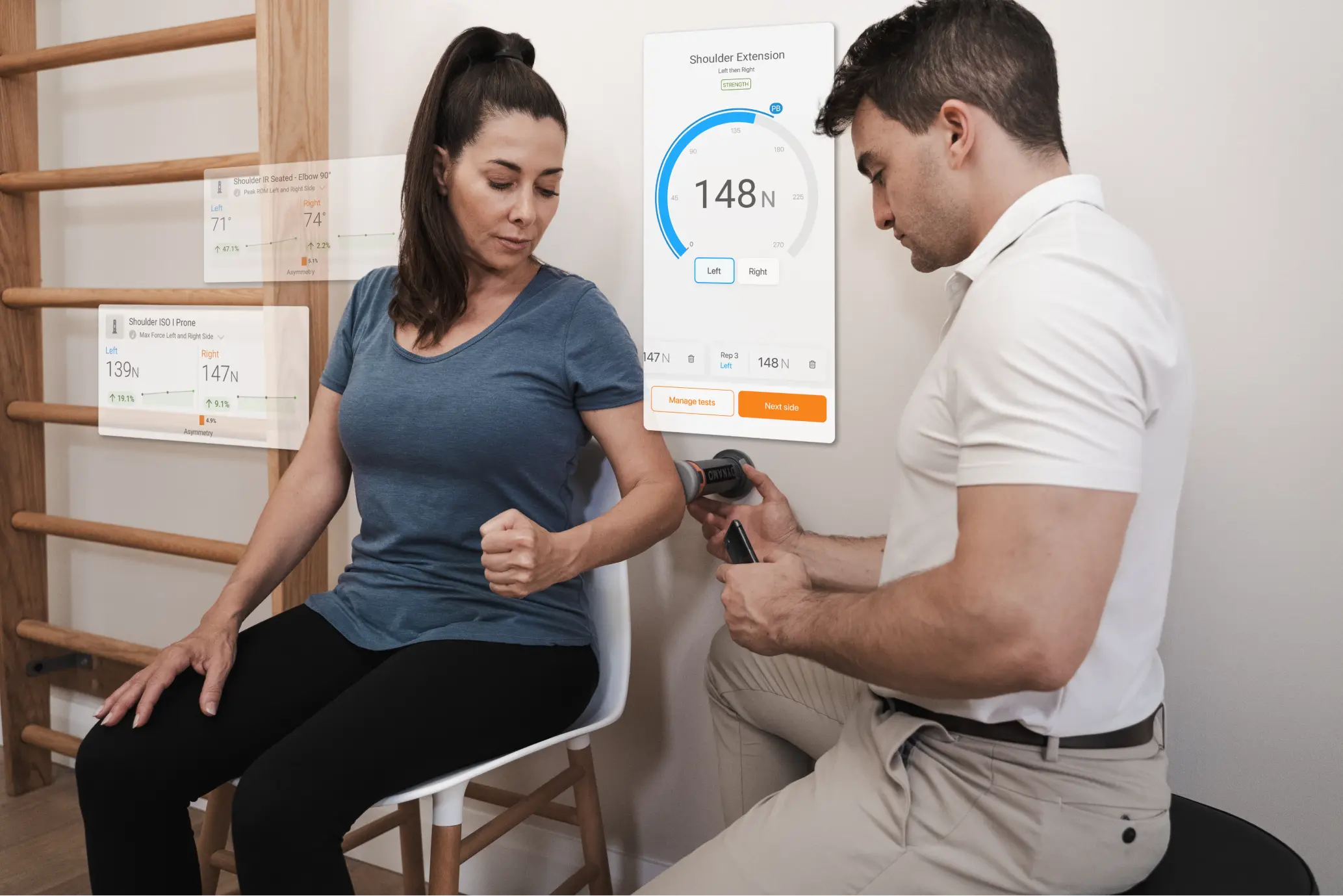
Each test metric, such as peak force, time to peak force, asymmetry or rate of force development (RFD), is just another piece to the puzzle. In the past, practitioners focused on peak force alone as it was the only measure of muscle strength provided by traditional HHDs. Now, HHDs such as DynaMo have ushered in a new era where much more detailed analysis is possible.
By adapting algorithms and insights from technologies like force plates (e.g., ForceDecks), these advanced devices now offer a multi-dimensional view – coming together to give us a full picture of a patients’ physical capabilities and areas that require focus. So, let’s see what these metrics mean;
Peak Force: This is your go-to metric for assessing muscle strength. It is a cornerstone in developing individualized strength training programs and a valuable tool in tracking patients’ recovery journeys after injuries.
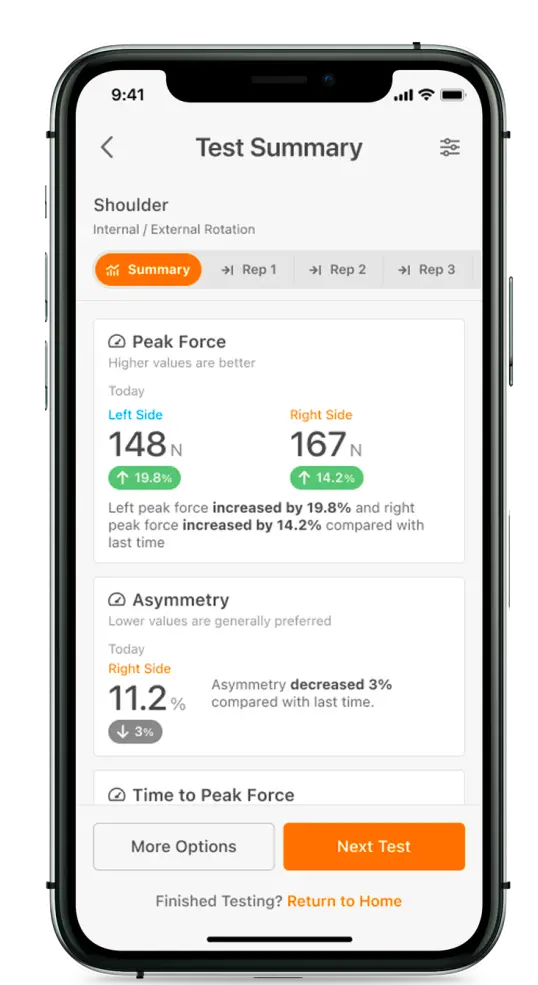
Asymmetry: As the name suggests – app-enabled HHDs can show differences in strength and function between muscle groups on both sides of the body. Asymmetry can be a powerful metric in rehabilitation programs and provide insights into training changes for athletes. However, it may not be as simple as assuming asymmetry is always “bad”, or that no asymmetry is “good” or that asymmetry can predict injuries – ultimately, context is key. However, having the insights to quantify the magnitude of asymmetry and monitor it over time provides invaluable insights for practitioners to be able to use in their decision-making.
Time to Peak Force: This measures the speed with which your muscles can reach their maximum strength. While peak force primarily measures muscular output, time to peak force creates a window into both neural and muscular determinants of dynamic muscle function. For athletes, this metric is particularly important, as it highlights the speed of muscle contraction. In rehabilitation, it can be used as another “light on a clinician’s dashboard” as they monitor neuromuscular recuperation.

Rate of Force Development: RFD is all about the speed of force generation. This is where athletic skill meets clinical insight. In sports, rapid force development translates to explosive power and peak performance. In clinical settings, RFD can be the pulse of functional recovery, particularly after neuromuscular injury. Tailoring training to enhance RFD equips individuals with the speed and strength essential for sports and everyday activities. In some cases, metrics like RFD can provide another outcome measure to monitor progression/regression when plateaus in peak force may surface.
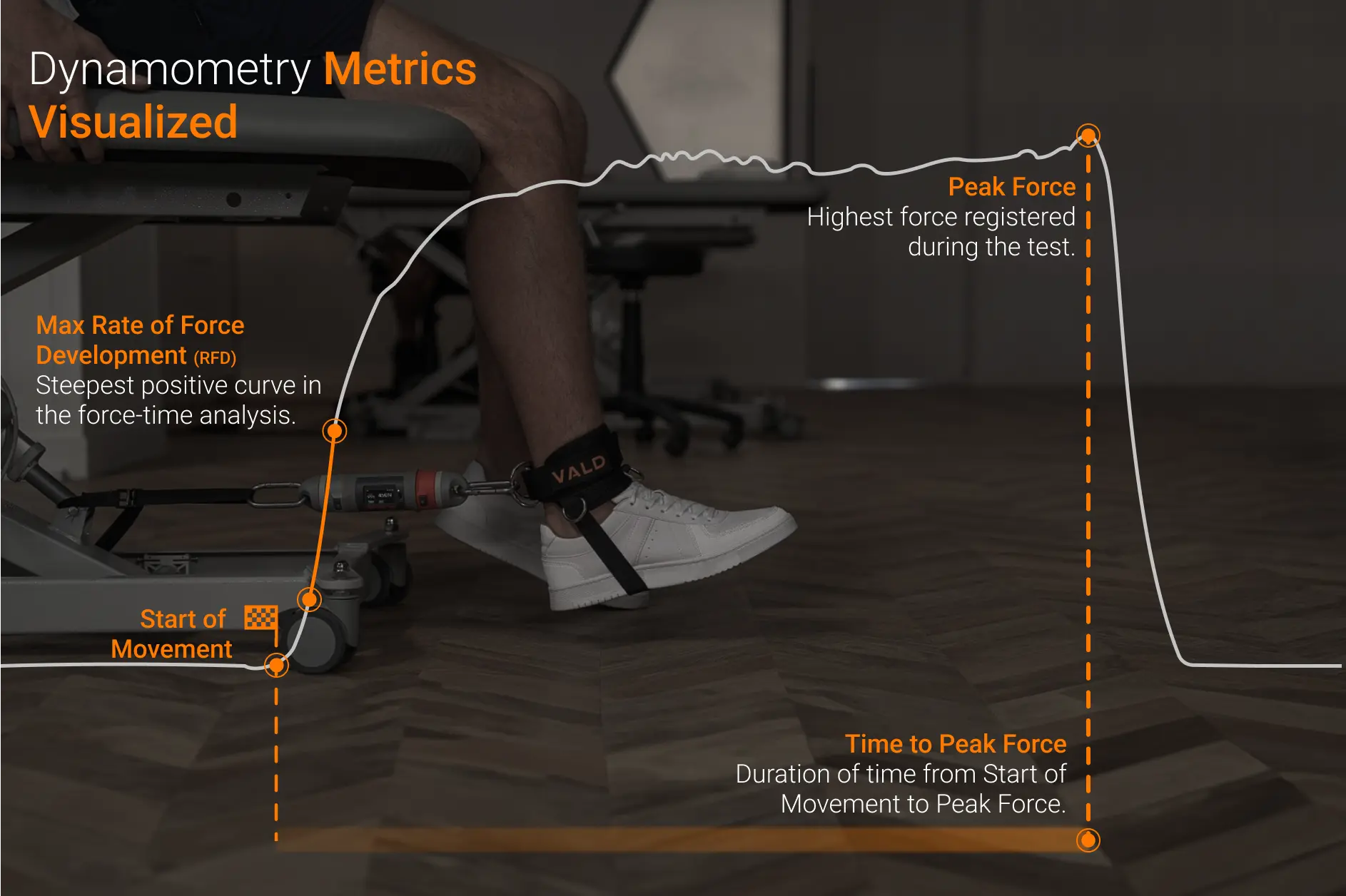
Beyond the Results – Workflow, Data Management and Patient Engagement
What you do with your data is arguably the most important aspect of objective assessment. Modern innovations in visualization, automated data analytics and data management (such as those in VALD Hub) allow for simple and immediate analysis of test results, improving day-to-day decision-making and client engagement.
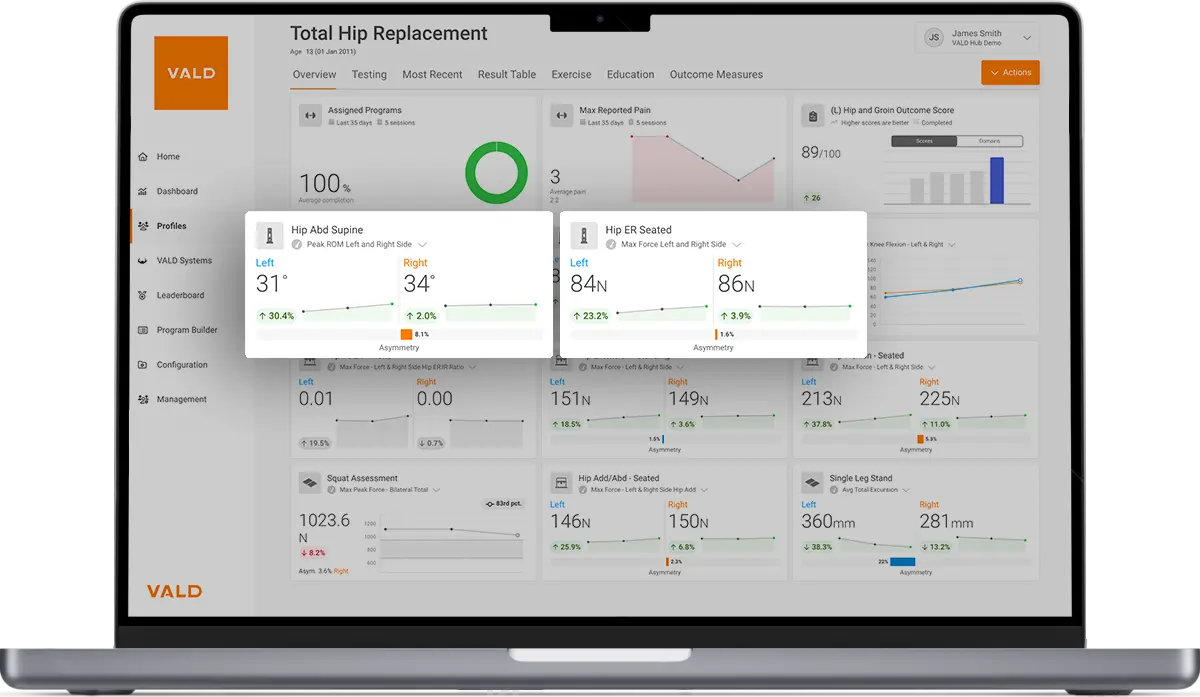
Particularly in app-enabled dynamometers, the ingenuity resides in the software, which reflects the effort and investment applied to their development. While the hardware is critical for capturing and transmitting raw data accurately, the real magic happens within the software, which transforms this raw data into actionable insights and visualizes it on engaging, interactive interfaces.
Particularly in app-enabled dynamometers, the ingenuity resides in the software, which reflects the effort and investment applied to their development.
Some key software functionalities of app-enabled dynamometers include:
- Streamlined Workflows: Customizable test batteries allow for tailored assessments to meet diverse patient needs efficiently, while providing real-time visual biofeedback for an engaging patient experience. Such app-based analyses allow for automated uploading to cloud-based analytics software like VALD Hub. Here, data management is simplified with client profiles, printable reports and longitudinal tracking against client-specific normative data.
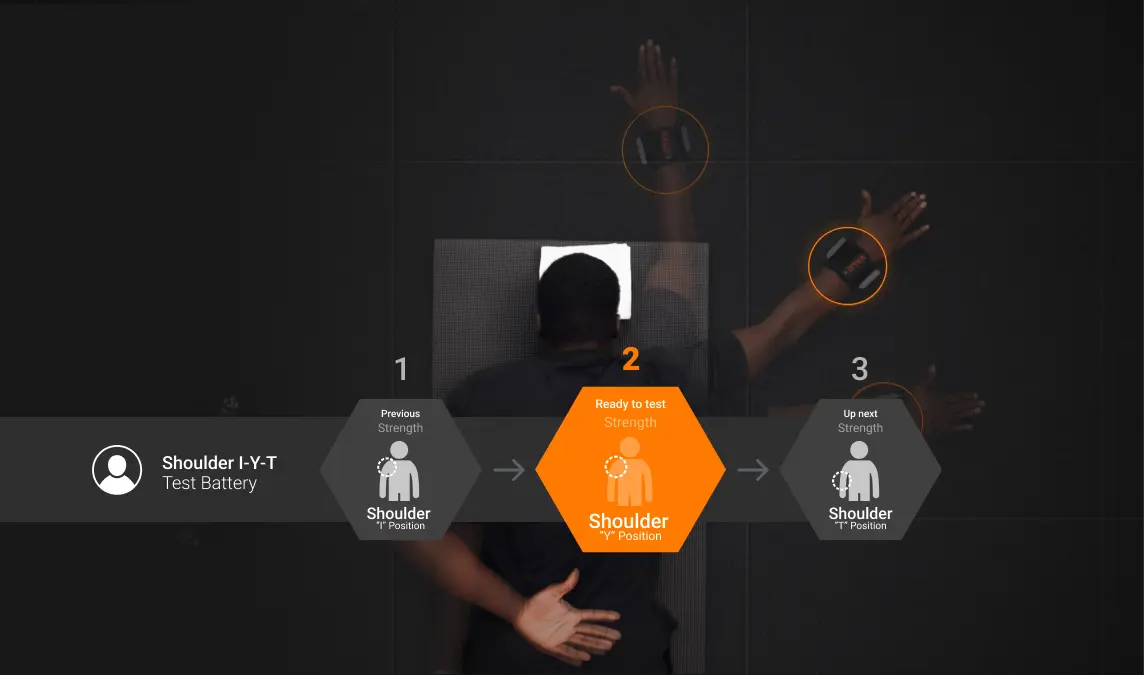
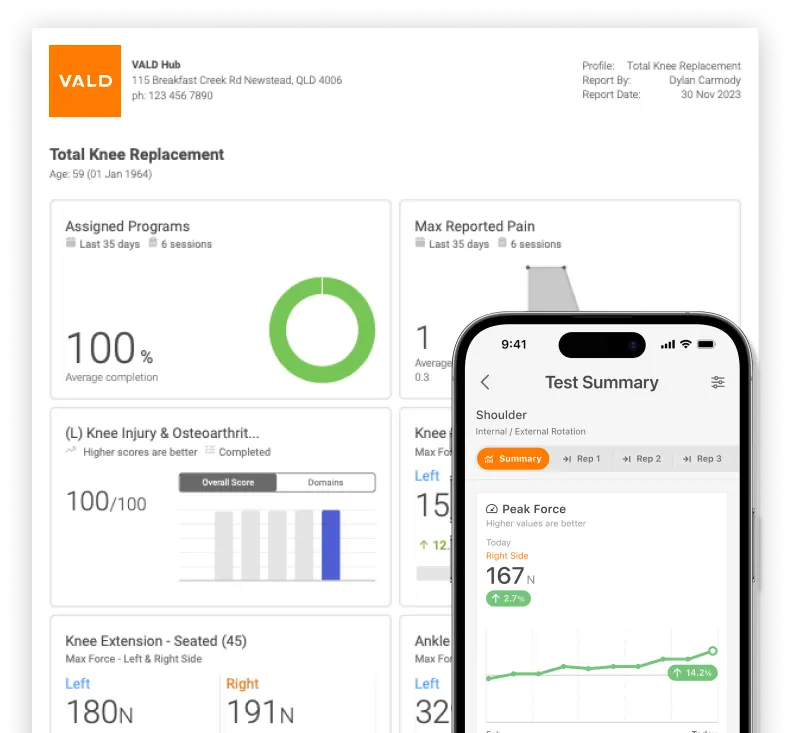
- In-App Results and Tracking: Integrating real-time, in-app result processing combined with longitudinal data tracking enhances both patient and provider experiences throughout rehabilitation. This feature allows for the continuous monitoring of progress, facilitating tailored treatment and training programs.
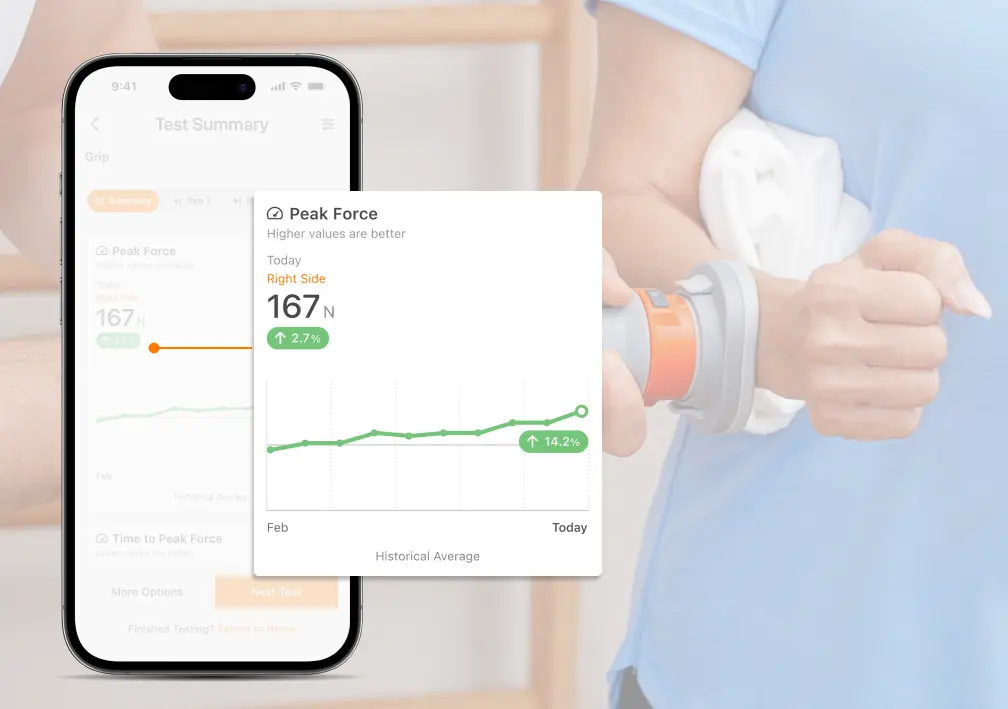
- Normative Data (Norms): Some HHDs such as DynaMo supports data-informed care with normative data and reports, allowing practitioners to compare patient results against other patients of the same age and gender – setting established performance benchmarks. This comparison is crucial for contextualizing patient strength levels and developing more effective rehabilitation or training strategies.
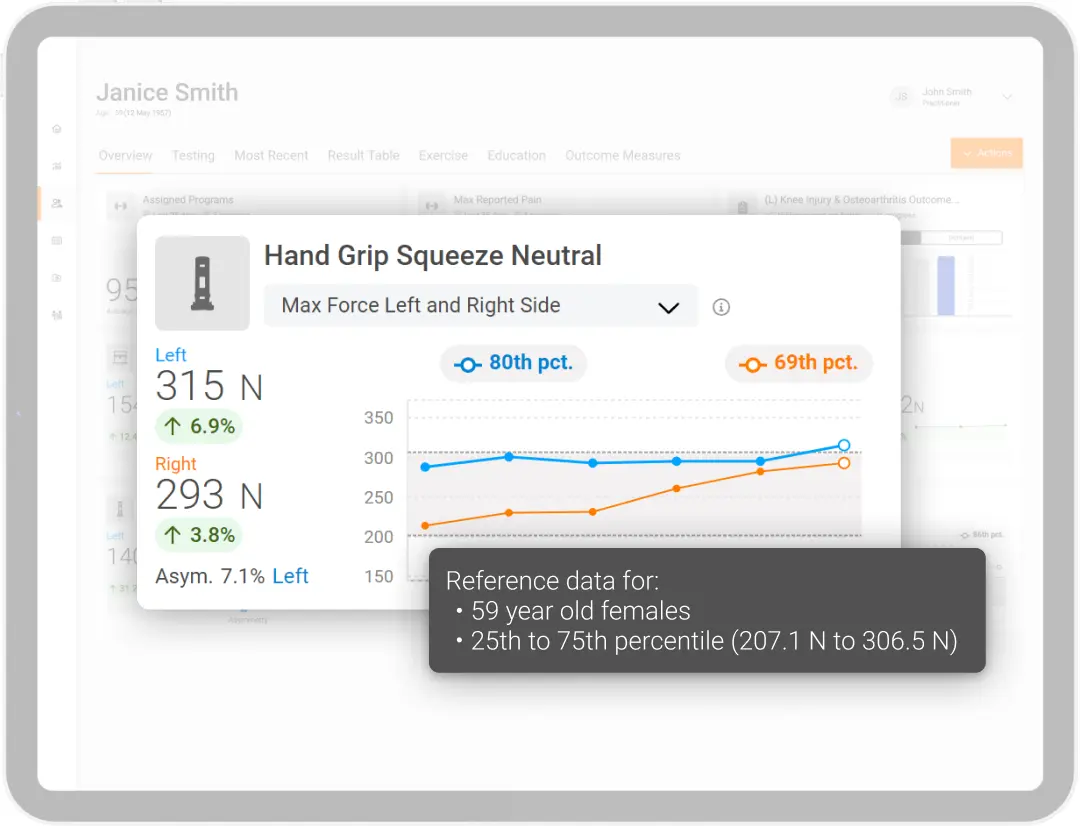
As a century-old testing device, modern advancements continue to improve the accuracy, usability and utility of HHDs allowing a modern twist to have a transformative impact on a clinician’s practice.
For a deeper insight into our technology's precision and efficiency in health and sports settings, contact us at info@vald.com or reach out here to take the first step towards integrating DynaMo’s muscle strength assessment tools into your professional toolkit.
